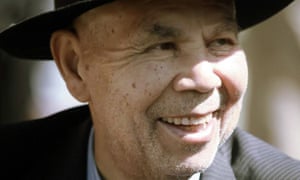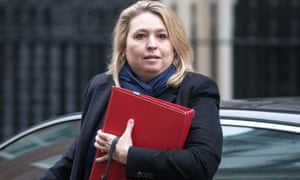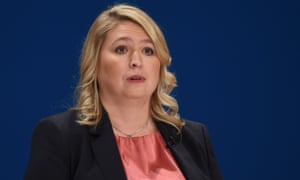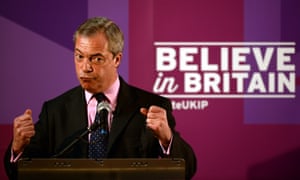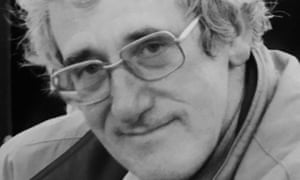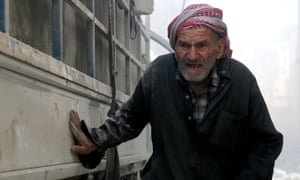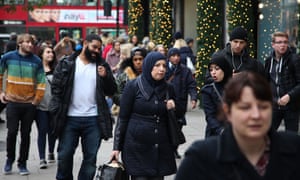
To captivate and amuse: musical angels on horseback, a detail from the Steeple Aston Cope (1330-40). Courtesy of the Victoria and Albert Museum
Few English medieval works of art grip the imagination quite like the ferocious and racy Bayeux Tapestry, the embroidered epic of the Norman Conquest. So many storytelling and aesthetic words come from stitching and weaving: the words “text” and “textile” both stem from the Latin word “texere”—to weave. We spin a yarn, weave a story, embroider or embellish an argument. The word “subtlety” derives from the Latin “subtilis”—the thread that passes under a warp. Embroidering between the Middle Ages and the 19th century was a feminine skill, a mark of patience, virtue, prudence. The French still associate the Bayeux Tapestry with Matilda of Flanders, William the Conqueror’s wife. Emma of Normandy, the wife of Edward the Confessor, was reputedly a great embroiderer. Fine embroidering in gold thread was goldsmiths’ work. The medieval word for an embroidered band, orphrey, is derived from the Latin “aurifrigium”—Phrygian gold, for the king of Phrygia was Midas. The most famous Gothic embroideries now displayed in London are essentially precious things, silky masterpieces of subtlety rather than sensible wool.
Gold and silk embroidery for the church was the one art form practised in England that attracted the epithet “Opus Anglicanum”—English work. The other English export industry of the day was alabaster, also delicate but never so celebrated. By the first half of the 14th century Opus Anglicanum had found its way across Europe, not least because it was a sensational weapon in the armoury of diplomatic gift-giving during the great century of Opus Anglicanum, 1250-1350.
England had long been known for “scarlets”, expensive (and not necessarily red) cloths. Opus Anglicanum developed this association and propagated a taste, not exclusively English but English by way of talent, for delicate connected and linked ornament, vegetation and bowers, birds and angels, prophets and Gospel stories, all lively, charming and pleasurable – and finely executed.
The study of Opus Anglicanum was founded systematically by A.G.I. Christie (no relation to Agatha), whose comprehensive study of English medieval embroidery appeared in 1938. Christie’s book still provides the foundation for all subsequent work, though its full illustrations were never so good as to captivate and gave little idea of the dazzle and detail of the medium. A large exhibition was held at the Victoria and Albert Museum (V&A) in 1963, but in the following decades, as the study of medieval art expanded in universities, Opus Anglicanum was bypassed for reasons that are obscure.
The current V&A exhibition (until 5 February) catalogue, English Medieval Embroidery: Opus Anglicanum, and the conference proceedings, The Age of Opus Anglicanum, both under review here, reverse this sorry state of affairs. The exhibition itself is a triumph. The embroideries are beautifully and intelligently displayed, and superbly and unobtrusively lit. The show is on exactly the right scale. In its beauty of presentation, coherence and digestible scale, it is one of the most successful of all.
Opus Anglicanum is an art of narrative, though never of the epic frieze variety exemplified by the Bayeux Tapestry. The skill is both technical and compositional, fitting in the subject matter coherently while maximising the virtue of variety. Not all items were vestments; some were altar frontals or even ceremonial armour such as the padded and confected jupon (a surcoat) and shield of Edward, the Black Prince, from Canterbury cathedral—faded and ochreous yet relic-like and eloquent because associated with a great man.
But the finest things on display were worn in church, either copes (which transformed the figures of the clergy into neat cones when they processed into the choir for the offices) or chasubles (curvaceous aprons for the officiating priest at mass). The copes look splendid when flattened and stretched out as vast semicircles, but should be thought of “performatively”, as things worn in movement.
The copes are decorated with an astonishing array of angels, often playing musical instruments, and especially birds. There are large-scale birds on the Toledo Cope in the exhibition, and they are as crisply delineated in their different species and as well observed as the birds that crowd the margins of English psalters and books of hours. Truly, the whole thing suggests plumage. Birdsong greets angelic song doubtless in witty allusion to the singing canons wearing copes in the choir—the “bare ruined choirs, where late the sweet birds sang”, as Shakespeare put it.
The remaining parts of the Steeple Aston Cope show musical angels, pointlessly mounted on horses given their huge wings, one on a dappled horse whose eyes are turned warily towards the angel’s lute. The effect is instantly captivating and amusing, and was intended to be. Many of the angels on the copes have peacock’s eyes on their plumage, alluding to the biblical vision of the cherubim in Ezekiel 10:12. Medieval commentators used the peacock to illustrate the wonderful variety of the Psalms. All are instances of variety, the cunning of craftsmanship in making dappled things. Few show the sorts of subversive and grotesque conceits found in the margins of medieval books. Some sense of decorum and order prevailed. But charm of sorts was obviously a selling point, and the force of human vanity undoubted.
The reputation of Opus Anglicanum had already begun to spread during the reign of Henry III of England and by the 1270s, with Edward I’s new Spanish queen, Eleanor of Castile, London embroideries were already noted in the collection of Toledo cathedral. By 1300 the huge papal inventories note many examples, and the circulation of embroideries among members of the papal curia remained central to the medium’s fame. There is far less evidence—so far—for its movement into the royal domain of France, perhaps because the cultural weight of Paris kept competing versions of Gothic at arm’s length. By 1300 English art certainly was competing, its surprising architecture witnessing a tremendous shift of initiative away from Paris. Opus Anglicanum may well have been the first thing seen in continental Europe that gave some idea of the latest trends outside Paris.
The inventive prowess of English architects and sculptors, their window traceries, elaborate vaulting and arts of carving were exported to Norway, Bohemia, Catalonia, Navarre, western and southern France, Italy, even Cyprus. Opus Anglicanum reflects this inventive prowess and reach. The Comminges Cope of the Virgin Mary has wound filigree tracery worthy of the late Gothic of Portugal. The Butler-Bowden Cope and related Chichester-Constable Chasuble, both exhibited, have ogees and figurative compartments indebted to the cloister at Norwich not long after 1300. By 1360 these motifs were in the Auvergne.
One thing clarified by the exhibition and its catalogue is that a straightforwardly gendered view of the production of Opus Anglicanum needs rethinking. An association of embroidery with women before 1300 is fully borne out by the career of the formidable-sounding Mabel of Bury St Edmunds, an embroiderer referred to two dozen times in records for the reign of Henry III: at first her work was sent for scrutiny and approval to the best workers in London, possibly men, but by 1256 Mabel’s skill was such that King Henry rewarded her with a great gown with rabbit fur. In fact, as Glyn Davies, a curator of the exhibition, shows in his catalogue essay on the embroidery trade, while women workers are most commonly documented in the 13th century, men are
__more common in the 14th, and the trade appears to have been concentrated in London.
The catalogue, edited by Davies, Clare Browne and Michael Michael and published by Yale, has superb razor-sharp reproductions which give a proper sense of the beauty and power of the medium which the images in Christie’s 1938 volume now do not. It is right that we should see every stitch, and understand what “underside couching” – the most important technique—really was. The catalogue has authoritative essays on the making of embroideries by Lisa Monnas, on the use of such textiles in the Church by Nigel Morgan, on the embroidery trade by Davies, on the medieval patrons of Opus Anglicanum by Julian Gardner, on their artistic context by Michael, on the latter phases of embroidery down to the Reformation by Kate Heard, and on later European developments by Evelyn Wetter.
Just in time for the exhibition a second volume has appeared, edited by Michael, the proceedings of a conference held at the V&A in 2013. It has a similar list of contributors to the catalogue, joined by Colum Hourihane writing about funeral palls and also an overview by Evelyn Thomas, and extends yet further the scholarly debate and the range of information to hand. It has to be said that the production values of the proceedings book are not so high because too many of the plates are out of focus. But its intellectual value is undoubted.
Quite suddenly the sophistication and passion of the discussion of Opus Anglicanum has burgeoned, and there will now be far
__more scope for study and debate. One slight hesitancy apparent in the catalogue and published papers is a tendency to focus on the pictorial arts without looking at the arts more generally. The implicit tendency is to think of embroidery as a minor art, though there is much in the exhibition to suggest otherwise. The idea of the minor arts is a creation of the Renaissance hierarchy of architecture, sculpture and painting, and was not articulated in the Middle Ages.
To describe these glittering and minute achievements of the needle a new coinage comes to mind: minificence—the magnificence of the minute. The large-scale arts always communicated with the smaller-scale ones, especially in the age of Decorated art, which lies at the heart of this show. In fact, other media are far from neglected, with panel paintings and manuscripts fully on show together with ivories. More metalwork might have driven home the point about pliability and preciousness, with a shade more time given to architecture and the Decorated style and its postscripts. Context can be performative, but it is also manifestly visual and affective. It would have been interesting too to have more French embroidery of the period such as the beautiful Châteaux Thierry frontal, if only to remind us of the tasks faced by the makers of medieval inventories abroad in trying to make up their minds what was English.
But one can always wish for more. Viewers able to weave their way through the throng at the V&A will now be better able to form their own questions as well as trying to answer the ones posed by these extraordinary and beautiful things. Never was art less dogmatic and amusing than Opus Anglicanum, testimony to a great, perhaps the greatest, age of English medieval art. And never have the losses been more spectacular.
Paul Binski specialises in the art and architecture of western Europe in the Gothic period. He has taught at Yale and is now professor of the history of Medieval art at Cambridge University. He is a fellow of the British Academy and a corresponding fellow of the Medieval Academy of America. His study of art and aesthetics in the 14th century, Gothic Wonder: Art, Artifice and the Decorated Style 1290-1350, appeared in 2014
English Medieval Embroidery: Opus Anglicanum Clare Browne, Glyn Davies and M.A. Michael, with the assistance of Michaela Zöschg Yale University Press in association with the Victoria and Albert Museum, 336pp, £35 (hb)
The Age of Opus Anglicanum M.A. Michael, ed Harvey Miller/Brepols, 240pp, €110 (hb)
